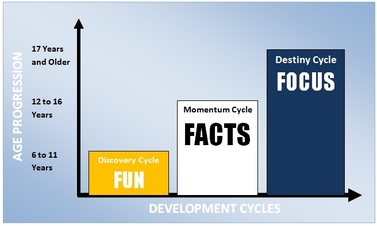 If you’re a golfer and not “living under a rock” the big news is a ten year old has qualified to play in the US Women’s Amateur Championship being played at the Country Club in Cleveland Ohio. Yes, a ten year old who shot a 70 (2 under)in sectional qualifying, has her own website and twitter account!! This youngster Latanna Stone not even a teenager yet has won over 100 tournaments and is coached by Charlotta Sorenstam (Annika’s sister). She stands 4’ 10” tall and is home schooled by her mother, structuring academics around her daughters golf schedule. This is quite the opposite of most young golfers who fit their golf around normal school hours. Since Tiger Woods burst onto the scene in the late 1990's, golfers at the highest level have been getting younger and younger. From Ty Tryon (US PGA Tour card at 17), to Ryo Isikawa winning on the Japanese tour at 15 years old, male golfers are getting better younger. And let's not forget that Michelle Wie played on the LPGA Tour as a thirteen year old or that Lydia Ko at 14 and Amy Yang at 16 (coached by my business partner Lawrie Montague) won major Women’s Professional Tour events respectively at very young ages. There seems to be no limits to the age a golfer can compete against the best in the world. Or is there...  The question is not should they be allowed to compete at any age but is it long term healthy for the self development of the young golfer? Research data has shown it is not healthy and can lead to early burnout or dropout. Wall & Cote (2004). It has been my Co-Director Lawrie Montague and my belief and observation that there are three cycles all juniors have to pass through and missing or short cutting any one of those cycles has an adverse effect on the personal development of those juniors. The three cycles (see above right) can be categorised as Discovery (ages 6-11), Momentum (ages 12 -16) and Destiny (ages 17+).  In the Discovery cycle (The Fun Cycle ages 6-11) the youngster should be allowed and encouraged to participate in as many sports as possible so they develop fundamental motor skills like running, jumping and throwing. This way they become athletes first. When involved in golf the training should resemble a “playground” and be fun. In the book “Driven” by Kevin Cook he examines life at the David Leadbetter Academy in Bradenton in Florida where young golfers have not played or sampled other sports and have specialised too early. The result is after leaving high school and they have not achieved the results they wanted so stop playing golf altogether and are lost to the game. At the Momentum cycle (The Facts Cycle ages 13-16) stage when the child reaches secondary or high school they gradually reduce participation in other sports. They start to learn effective practice and training regimes and the time is right for the parent to find a specialist PGA/LPGA golf teaching professional who has the skills to implement a structured and periodised program. The Destiny cycle (The Focus Cycle ages 17+) is the transition point when the junior commits to becoming an elite golfer and make golf his primary sport. All their free time is devoted to deliberate practice (3-5 hours per day). Full support from parents, coach, state and national association is vital in this cycle.  So what does this all mean for ten year old Latanna and others who will surely follow? There are calls to limit the age of golfers that wish to play in USGA events as they have on the LPGA Tour where the minimum age of 18 was set. But that was challenged when Morgan Pressell and Aree Song appealed and were given exemptions. It is my belief that these young golfers be given the opportunity to qualify and play in open events if they wish but still go back and play with other golfers of their age for the social interaction that is vital to develop a well balanced personality and self image. A good example is Michelle Wie who has had to retraced her footsteps and gone back to finish college to get life experiences that she has missed whilst trying to play against the men on the PGA Tour on a regular basis, especially when she had not won a tournament on the LPGA Tour As Kevin Cook’s conclusion in his book suggest's and which I agree with, don’t skip any of the three cycles or you will pay the price one way or another on or off the course. On another note, wishing both PTGC students Whitney Hillier and Tatiana Wijaya all the very best as they compete in the US Women’s Amateur Championship this week at the Country Club in Cleveland Ohio. All the best amateurs in the world will be there and after two rounds stroke play the top 64 qualifiers will go head to head in match play. Go get em girls! David Milne and Lawrie Montague - Pro Tour Golf College [email protected] Comments are closed.
|
Archives
June 2019
|
Proudly Supported By
Copyright © 2011 - 2018 Pro Tour Golf College
Website Managed By Golf Performance Media
All Rights Reserved
Website Managed By Golf Performance Media
All Rights Reserved

 RSS Feed
RSS Feed



